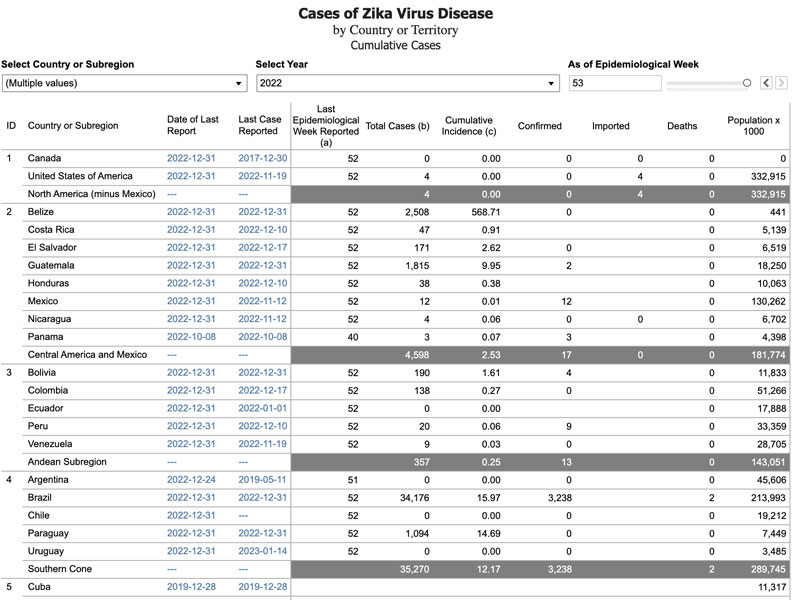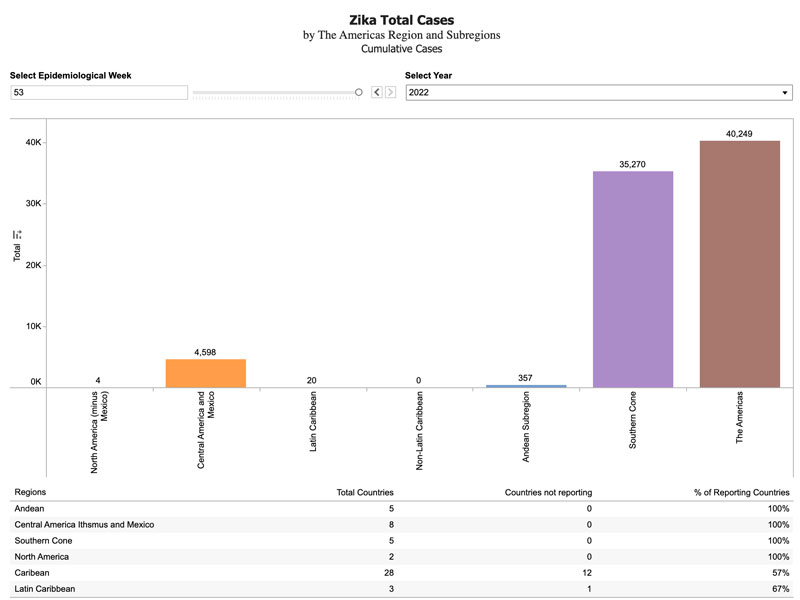Zika
Since Zika was first detected in the continent of the Americas in May 2015, PAHO/WHO has published Zika case counts that the 52 countries and territories in the Americas have reported directly or have published in national bulletins. PAHO/WHO continues to make every effort to capture Zika surveillance data and consolidate it for public health purposes.
Notifiable diseases such as Zika are detected largely through passive surveillance systems that detect cases in persons who seek healthcare in participating health facilities. However, given the high proportion of asymptomatic persons among those infected with Zika virus, the lack of specificity of the clinical presentation among cases, and the complexity of laboratory diagnosis in a context of co-circulation of closely-related viruses, the detection of Zika virus presents many challenges. While efforts are directed toward enhancing the sensitivity of surveillance systems, a lack of detection is not a guarantee that Zika virus is not in circulation or that local transmission has been interrupted.
The decision to travel to a country with a history on Zika circulation should be based on a personal risk assessment, done in conjunction with the traveler’s healthcare provider, that account for individual risk factors for severe outcomes from the possibility of a Zika infection.


